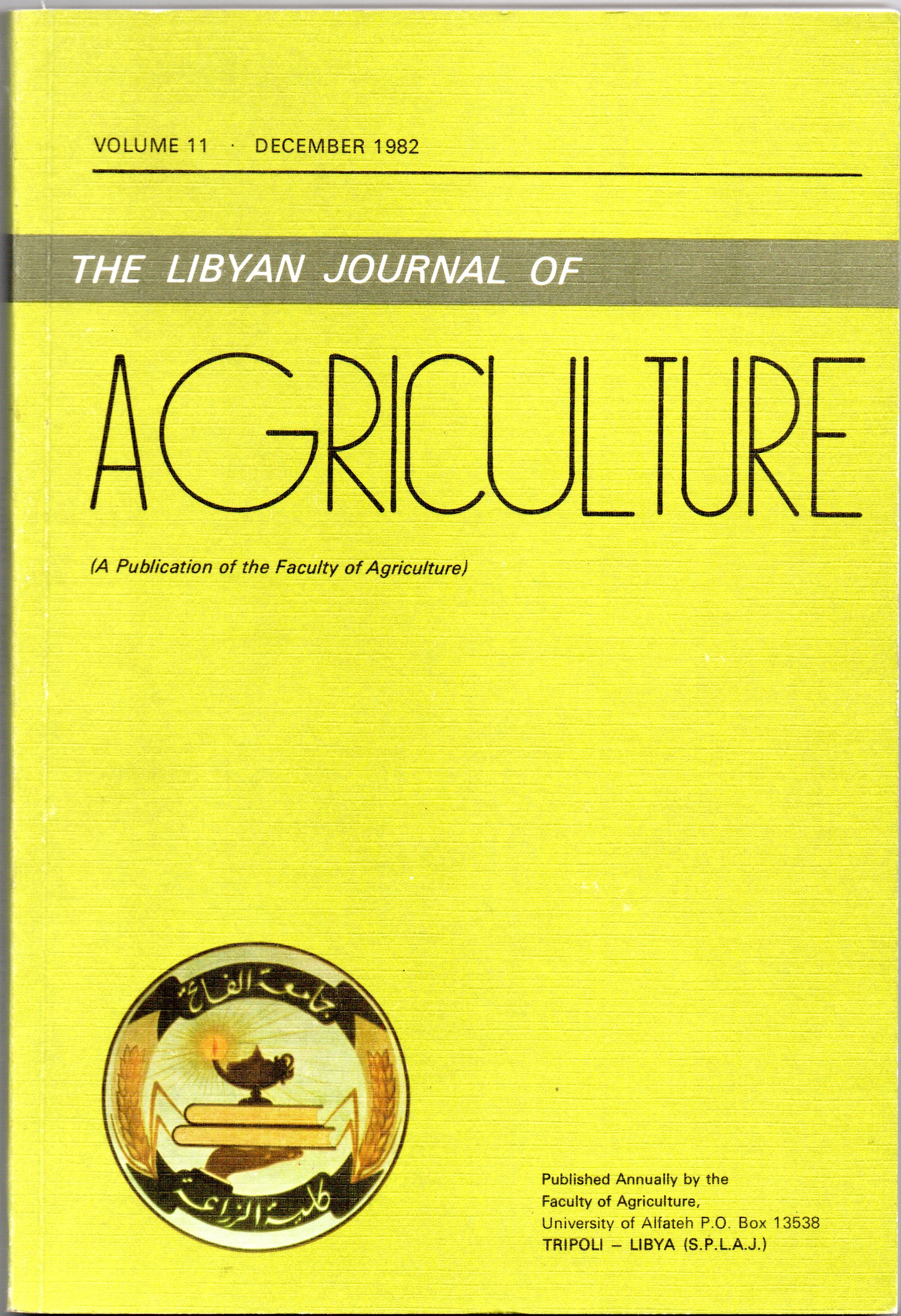Alternaria Leaf Spot of Fig in the Libyan Arab Jamahiriya
Main Article Content
Abstract
Infected leaves were washed thoroughly with water. The diseased areas were cut into small pieces, surface-sterilized with 10% Clorox Solution (commercial sodium hypochlorite) for two minutes, rinsed with sterile distilled water, and placed in petri-dishes containing potato dextrose agar medium. Pathogenicity studies were employed on attached leaves of two-years old fig trees and on detached leaves as well.
Alternaria spp. was consistently isolated from the infected leaves. Pathogenicity tests under laboratory and field conditions indicated that the isolated organism was able to induce the same type of symptoms (Fig. 2). Under humid conditions, these spots spread rapidly and caused defoliation of the infected leaves.
Review of the available literature revealed that no previous record of the alternaria leaf spot on figs in Libya. This paper reports for the first time the occurrence of this disease in the Libyan Arab Jamahiriya.

